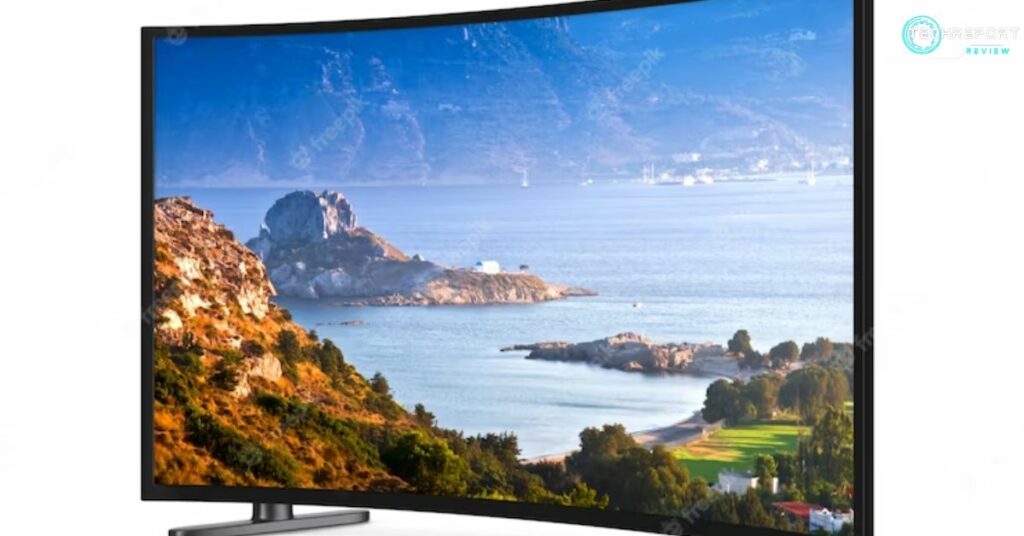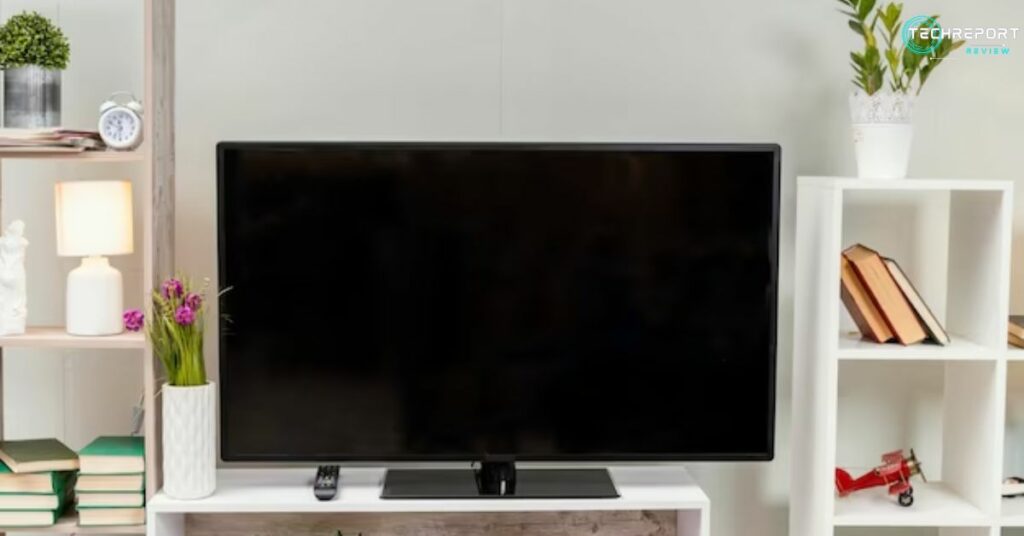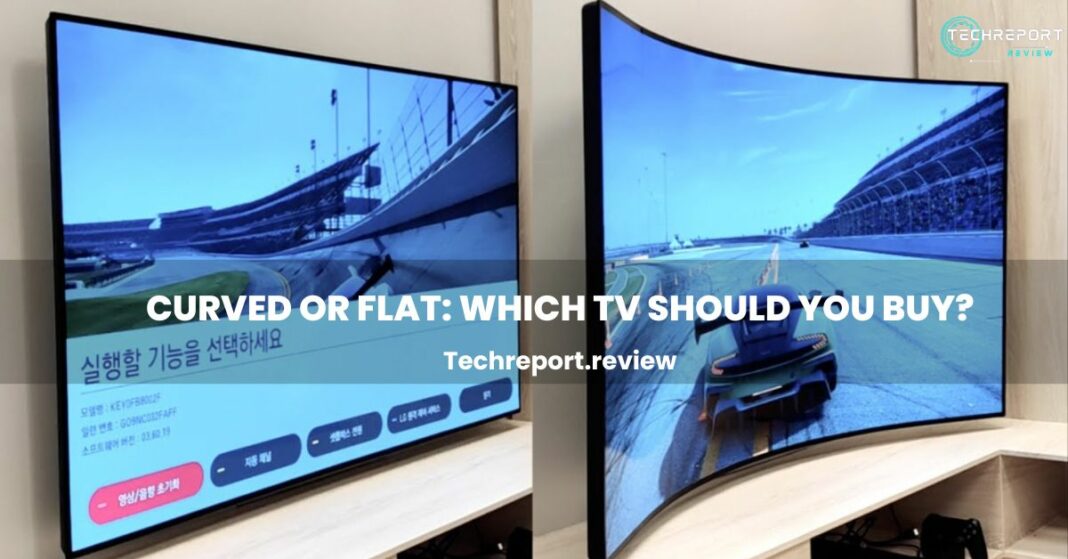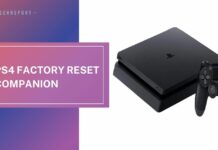Curved or Flat: Which TV Should You Buy?
When it comes to choosing a TV, one of the main decisions to make is whether to go for a flat or curved screen. Flat TVs have been the norm for many years, but in recent times, curved TVs have emerged as an alternative option. The main difference between the two is that flat screens are, as the name suggests, completely flat, while curved screens have a slight curve to them.
Choosing the right TV is crucial for a great viewing experience. A TV that’s too small or doesn’t have the right features can leave you feeling frustrated, while a TV that’s too big or has too many features can be overwhelming. It’s important to consider your needs and preferences when choosing a TV, so you can find one that meets your expectations and provides an enjoyable viewing experience.
Both flat and curved TVs have their own set of pros and cons. For example, flat screens are generally more affordable, come in a wider range of sizes, and are better suited for brightly lit rooms. On the other hand, curved screens are said to provide a more immersive viewing experience, and can be more ergonomic. However, they are also more expensive, have limited viewing angles, and can suffer from reflections. In this article, we’ll take a closer look at the differences between flat and curved TVs, and help you decide which one is right for you.
Benefits of a Curved TV

Curved TVs have gained popularity in recent years, thanks to their unique design and the advantages they offer over flat screens. Here are some of the key benefits of a curved TV:
Improved viewing angles
One of the main advantages of a curved TV is that it provides a better viewing experience from multiple angles. Unlike flat screens, which can appear washed out or distorted when viewed from the sides, a curved TV maintains a consistent image quality, regardless of where you’re sitting. This is particularly useful in larger rooms or open-plan spaces, where there may be multiple seating areas.
Enhanced immersion and depth perception
Another benefit of a curved TV is that it enhances immersion and depth perception. The curvature of the screen makes it feel like the image is surrounding you, which can be particularly effective for movies and games that are designed to be immersive. This is because curved TVs create a more natural field of view, which is closer to how our eyes perceive the world.
Reduced glare and reflections
Curved TVs are less prone to glare and reflections than flat screens. This is because the curved surface of the screen helps to deflect light away from the viewer, reducing the amount of reflected light that can cause distracting glare. This can be particularly useful in rooms with large windows or bright lights.
Improved contrast and brightness
Another advantage of a curved TV is that it can provide improved contrast and brightness. The curve of the screen helps to reduce the amount of light that is reflected away from the viewer, which can make the image appear brighter and more vivid. Additionally, the curvature of the screen can help to reduce the amount of light that is lost due to the viewing angle, which can improve contrast.
Improved aesthetics
Finally, curved TVs can be a stylish addition to any room. The curved design of the screen can add a modern and sophisticated touch to your home entertainment setup and can be particularly effective if you have a contemporary or minimalist decor.
Overall, the benefits of a curved TV make it a compelling option for those who want an immersive and visually stunning viewing experience. However, there are also some drawbacks to consider, which we’ll explore in the next section.
Drawbacks of a Curved TV
While curved TVs do offer some benefits, some drawbacks need to be considered before making a purchase decision:
Limited viewing angles for groups
One of the most significant drawbacks of a curved TV is the limited viewing angles for groups of people. The curve of the screen makes it difficult for people sitting off to the side to see the picture. This can be a problem for families or groups of friends who want to watch TV together.
Potentially more expensive
Curved TVs are generally more expensive than their flat counterparts. This is because they require more complex manufacturing processes, and the demand for them is not as high as for flat-screen TVs. The price difference can be significant, especially for larger screen sizes.
Reflections may be more noticeable
While curved screens are designed to reduce reflections and glare, they can make them more noticeable in some cases. This is because the curve of the screen can cause reflections to be distorted and appear in unexpected places.
Distorted image at extreme angles
While a curved screen can improve the viewing experience for those sitting in the sweet spot, it can distort the image at extreme angles. This means that if you move too far to the left or right, or if you stand up, the picture can become distorted.
Limited placement options
Another drawback of curved TVs is that they have limited placement options. Because of the curve of the screen, they can only be placed in certain locations and may not fit well in all spaces. This can be a problem for people with small rooms or unusual layouts.
Despite these drawbacks, curved TVs can still be a good choice for some viewers. It’s important to carefully consider the pros and cons before making a decision.
Advantages of a Flat TV

Flat-screen TVs have become the norm in the modern home entertainment setup. They offer a range of benefits that make them an attractive choice for many consumers. Here are some of the key advantages of a flat TV:
Wide Viewing Angles
One of the biggest advantages of a flat TV is the wider viewing angles it offers. Unlike curved TVs, which require a central viewing position to fully appreciate the curved design, flat TVs can be viewed from almost any angle without any distortion or loss of picture quality.
Easy Wall Mounting
Flat TVs are generally easier to mount on walls than curved TVs. Their flat design makes them easier to install and allows them to be mounted closer to the wall. This is particularly useful for those who want to save space in their living room or home theater setup.
More Affordable
Flat TVs are generally more affordable than curved TVs. This is because the manufacturing process for curved TVs is more complex and requires more advanced technology. As a result, curved TVs tend to be more expensive than flat ones.
Minimal Reflections
Flat TVs tend to have less reflection than curved TVs. This is because the curved surface of a curved TV can cause light to reflect off the screen at different angles, resulting in distracting reflections. Flat TVs, on the other hand, have a smooth, flat surface that reduces the amount of reflection.
Standard Design
Finally, flat TVs have a more standard design that fits in well with most home décor styles. The sleek, flat design of a flat TV is simple and unobtrusive, allowing it to blend in seamlessly with the rest of your furniture and décor.
Overall, flat TVs are a great choice for those who prioritize wide viewing angles, easy wall mounting, affordability, minimal reflections, and standard design.
Disadvantages of a Flat TV
While flat TVs have some advantages, they also have some disadvantages that should be considered before making a purchasing decision.
May produce washed-out colors
Flat TVs may produce washed-out colors, particularly at off-center angles. This can be especially noticeable with cheaper models that use less sophisticated LCD panels.
Limited depth perception
Flat TVs typically do not offer the same level of depth perception as curved TVs. This is because the edges of the screen are farther away from the viewer’s eyes, making it more difficult to create a sense of depth.
Reduced contrast
Flat TVs may also have reduced contrast compared to curved TVs. This is because the flat screen design can lead to a greater degree of light bleed, where light from one part of the screen spills over into adjacent areas.
More noticeable glare and reflections
Because flat TVs do not have the same curved design as curved TVs, they can be more susceptible to glare and reflections from lights or windows in the room. This can be particularly noticeable in brightly lit rooms.
Less immersive
Due to the lack of curve, flat TVs may not provide the same level of immersion as curved TVs. This can be especially noticeable in larger screen sizes, where the lack of curvature can make it feel like the viewer is simply looking at a flat image, rather than being drawn into it.
Picture Quality Comparison
Before comparing the picture quality of flat and curved TVs, it’s important to understand the factors that contribute to the overall picture quality.
Resolution refers to the number of pixels that make up the display. A higher resolution generally means a sharper and more detailed image. Color accuracy refers to how accurately the TV can reproduce colors, with a wide color gamut and high color accuracy resulting in more lifelike and vivid colors. Contrast refers to the difference between the brightest and darkest parts of an image, with higher contrast resulting in a more dynamic and realistic picture.
In terms of picture quality, both flat and curved TVs have their strengths and weaknesses.
Curved TVs tend to have better contrast and color accuracy than flat TVs. The curvature of the screen helps to reduce the amount of light that’s reflected off the surface of the screen, resulting in deeper blacks and more vivid colors. This is especially noticeable when watching movies with dark scenes or colors that are difficult to reproduce accurately.
On the other hand, flat TVs generally have a higher resolution than curved TVs. This is because the flat surface of the screen allows for more uniform pixel density across the display. As a result, flat TVs tend to have sharper and more detailed images than curved TVs.
Real-world testing has shown that the difference in picture quality between flat and curved TVs is often subtle and difficult to discern. While curved TVs may have better contrast and color accuracy in certain scenarios, flat TVs tend to have a higher resolution and wider viewing angles.
Ultimately, the choice between a flat and curved TV comes down to personal preference and the intended use of the TV. Those who prioritize immersive viewing experiences may prefer the slight advantage that curved TVs have in contrast and color accuracy. However, for those who prioritize high resolution and wider viewing angles, a flat TV may be the better choice.
Ergonomics and Eye Strain
Ergonomics refers to the study of how people interact with objects in their environment and how they can optimize those interactions for maximum comfort and efficiency. When it comes to TV viewing, ergonomics plays an important role in determining the overall viewing experience. One of the most significant ergonomic factors is eye strain, which can occur when the eyes are forced to focus on a single point for extended periods. Eye strain can cause discomfort, fatigue, and even headaches, which can detract from the overall enjoyment of a TV viewing session.
When it comes to ergonomics and eye strain, there are some notable differences between flat and curved TVs. Flat TVs tend to be better suited for larger rooms, where viewers may be sitting farther away from the screen. This is because flat TVs offer a wider viewing angle than curved TVs, which means that viewers can sit off to the side and still see the image. Additionally, flat TVs are generally better at minimizing reflections and glare, which can be a significant source of eye strain.
Curved TVs, on the other hand, are better suited for smaller rooms, where viewers are sitting closer to the screen. This is because curved TVs offer a more immersive viewing experience, which can be especially beneficial for action-packed movies and video games. However, because curved TVs have a more limited viewing angle, viewers need to be positioned directly in front of the screen to get the full effect.
Regardless of whether you choose a flat or curved TV, there are some tips you can follow to reduce eye strain during prolonged viewing sessions. One of the simplest and most effective strategies is to take regular breaks. Experts recommend taking a 20-second break every 20 minutes to give your eyes a chance to rest and refocus. Additionally, you can adjust the lighting in your viewing environment to reduce glare and reflections. Finally, you can experiment with the positioning of your TV to find the optimal viewing distance and angle for your needs.
Gaming
Gaming is one of the primary uses for TVs today, and as such, it is important to understand the features and requirements that are necessary for an optimal gaming experience. Some of the key features to consider when looking for a TV for gaming include resolution, refresh rate, input lag, and HDR compatibility.
Resolution is an important factor for gaming as it impacts the clarity and detail of the image on the screen. The most popular resolutions for gaming are 1080p (Full HD), 1440p (Quad HD), and 4K (Ultra HD).
Refresh rate is the number of times per second that the TV updates the image on the screen. A higher refresh rate results in a smoother image and reduces motion blur, which is especially important for fast-paced games.
Input lag is the time it takes for the TV to display the input from the controller. A lower input lag is preferred for gaming as it allows for more responsive gameplay.
HDR compatibility is also important for gaming as it improves the color and contrast of the image, making it more vibrant and realistic.
In terms of gaming performance, both flat and curved TVs have their advantages and disadvantages. Flat TVs generally have lower input lag and better viewing angles, which is important for multiplayer games. They are also more affordable than curved TVs.
Curved TVs, on the other hand, can provide a more immersive experience, especially for single-player games. The curved screen can create a more realistic and immersive environment, which can enhance the gaming experience. However, they are generally more expensive than flat TVs.
When it comes to input lag and refresh rate, both flat and curved TVs can vary in performance. It is important to choose a TV with a low input lag and a high refresh rate for an optimal gaming experience.
In terms of input lag, most flat and curved TVs have a lag of less than 20 milliseconds (ms). Which is considered acceptable for gaming. However, some models may have higher input lag, so it is important to check the specifications before purchasing.
Refresh rate is another important factor for gaming, with most modern TVs having a refresh rate of at least 60Hz. However, some gaming monitors and TVs offer higher refresh rates, such as 120Hz or even 240Hz. Which can provide a smoother gaming experience with less motion blur.
Overall, it is important to consider both input lag and refresh rate when choosing a TV for gaming. As well as other factors such as resolution and HDR compatibility.
Brightly Lit Rooms
The amount of light in a room can have a significant impact on the picture quality of a TV. Bright light can cause reflections and glare on the screen, which can make it difficult to see the image. Additionally, the brightness of the room can affect the perceived brightness and contrast of the TV. For this reason, it is important to choose a TV that performs well in brightly lit rooms.
Flat TVs tend to perform better in brightly lit rooms than curved TVs. This is because flat TVs typically have a higher peak brightness, which allows them to produce a brighter image that can overcome the effects of bright ambient light. Additionally, flat TVs tend to have a matte screen finish that helps reduce reflections and glare.
Curved TVs, on the other hand, can be more prone to reflections and glare in brightly lit rooms. The curve of the screen can cause light to reflect in multiple directions, which can create distracting reflections on the screen. Additionally, curved TVs tend to have a glossy screen finish that can exacerbate reflections and glare.
In real-world testing, flat TVs have generally been found to perform better than curved TVs in brightly lit rooms. For example, in a review by Rtings, a popular TV review website, a flat TV (the Samsung Q80/Q80A QLED) was found to perform significantly better in a bright room than a curved TV (the Samsung Q80T QLED). The flat TV had a higher peak brightness and produced a better image with less glare and reflections.
Durability
Durability is a crucial factor to consider when buying a TV. After all, you want your investment to last for a long time. The durability of a TV depends on several factors, including the build quality of the materials. The manufacturing process, and the design. The more robust and sturdy a TV is, the more durable it will be.
When it comes to durability, flat and curved TVs have some differences. Flat TVs are generally more durable than curved TVs due to their simpler design. Curved TVs have a more complicated build that can make them more prone to damage. The curvature of the screen can also make it more susceptible to scratches. Particularly if the TV is frequently moved or bumped.
Real-world testing has shown that flat TVs are generally more durable than curved ones. A study by Consumer Reports found that flat TVs had fewer issues with picture quality and durability than curved TVs. Another study by RTINGS.com found that curved TVs were more likely to develop screen defects, including clouding and uniformity issues. While these studies provide some insight into the durability of flat and curved TVs, it’s worth noting that individual results may vary depending on the specific brand and model of TV.
Future of TV
The TV industry is continuously evolving, and innovations and technologies are emerging every day. One of the most significant advancements in recent years has been the introduction of 4K resolution. Which provides four times the number of pixels as 1080p resolution, resulting in sharper and more detailed images. Furthermore, HDR (High Dynamic Range) technology has also gained popularity in recent years. Which enables a TV to display a more extensive range of colors and brightness levels. Resulting in more lifelike and realistic images. OLED (Organic Light-Emitting Diode) and QLED (Quantum Light-Emitting Diode) technologies are also gaining popularity, providing improved color accuracy, deeper blacks, and better contrast ratios.
As technology continues to advance, the future of TVs is expected to be more curved, flexible, and foldable. We can expect to see improvements in screen resolution, color accuracy, and brightness levels, as well as the integration of advanced features such as voice control, AI, and virtual assistants. The rise of OLED and QLED technologies has also led to the development of more energy-efficient TVs that consume less power and produce fewer emissions.
According to market research, the global TV market is expected to grow significantly in the coming years. With an increasing demand for larger screens, higher resolutions, and more advanced features. The adoption of curved and flexible screens is also on the rise. With more manufacturers investing in R&D to develop new and innovative products. Industry experts predict that the future of TVs will be more immersive. With the integration of virtual reality technology and advancements in 3D displays. Furthermore, smart TVs are becoming increasingly popular. With more users accessing streaming services, apps, and other online content directly from their TVs. Overall, the future of TVs is bright, and we can expect to see more exciting innovations and developments in the coming years.
In Crux
In conclusion, both flat and curved TVs have their advantages and disadvantages. Flat TVs are more affordable, have a standard design, and produce wide viewing angles. While curved TVs offer enhanced immersion and depth perception. Reduced glare and reflections, and improved contrast and brightness. When it comes to picture quality, both types of TVs have their own strengths and weaknesses. And the choice ultimately depends on personal preferences.
Choosing the best type of TV depends on individual needs and preferences. If you are on a budget and want a TV with a standard design, wide viewing angles, and easy wall mounting. Then a flat TV may be the best option for you. However, if you want a TV with enhanced immersion and depth perception. Reduced glare and reflections, and improved contrast and brightness, then a curved TV may be the right choice.
Regardless of the type of TV you choose. It is important to consider ergonomics and eye strain related to TV viewing. You should also consider factors such as gaming performance, viewing in brightly lit rooms, and durability when making your decision. By understanding the pros and cons of flat and curved TVs and taking your personal needs and preferences into consideration. You can choose the best TV for an optimal viewing experience.
How much did you like Our detailed Curved or Flat: Which TV Should You Buy?? Review Also, please share these Blogs with your friends on social media.
Related Blogs




























